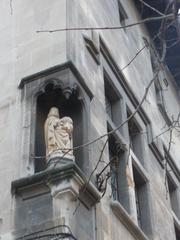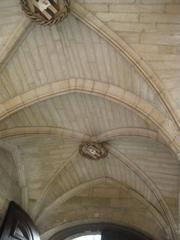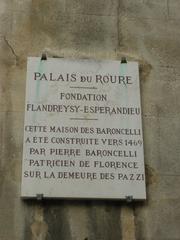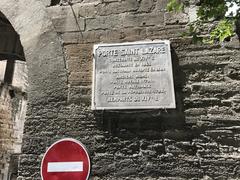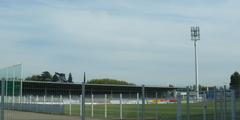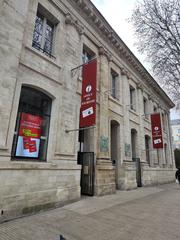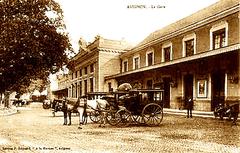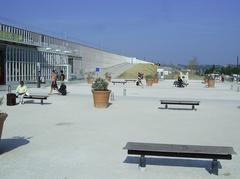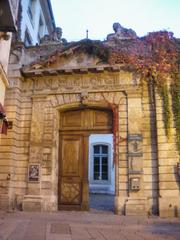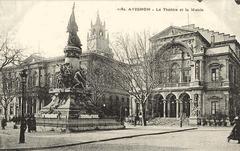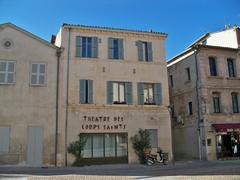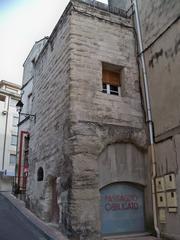
Visiting Palais du Roure in Avignon: Hours, Tickets, and Tips
Date: 25/07/2024
Introduction
The Palais du Roure, an architectural marvel in the heart of Avignon, France, is a testament to the region’s rich cultural and historical heritage. Constructed in the 15th century, this grand townhouse originally served as the residence of the Baroncelli family, a noble lineage hailing from Florence, Italy. The palace, with its blend of Gothic and Renaissance architectural styles, reflects the opulence and cultural significance of its era. Over the centuries, the Palais du Roure has transformed from a noble residence to a cultural center and museum, preserving the essence of Provençal culture (Wikipedia). Today, it stands as a repository of historical artifacts, documents, and artworks that provide a glimpse into the past, making it a must-visit destination for history enthusiasts and casual travelers alike. This comprehensive guide will delve into the Palais du Roure’s history, cultural significance, visitor information, and nearby attractions, ensuring a well-rounded understanding and an enriching visit.
Table of Contents
- Introduction
- Origins and Early History
- The Baroncelli Family Era
- Transition to Jeanne de Flandreysy
- Cultural and Historical Significance
- Official Recognition and Museum Status
- Visiting Hours and Tickets
- Special Events and Guided Tours
- Architectural Features
- Nearby Attractions and Travel Tips
- Conservation Efforts
- FAQ
- Conclusion
Origins and Early History
The Palais du Roure was constructed in the 15th century and initially belonged to the Baroncelli family, a noble lineage from Florence, Italy. The architectural style of the palace reflects its Florentine roots, showcasing elements of Italian Renaissance design. For nearly five centuries, the Baroncelli family played a significant role in Avignon’s cultural and social life (Wikipedia).
The Baroncelli Family Era
During the Baroncelli family’s tenure, the Palais du Roure became a hub of cultural and social activity in Avignon. The family’s influence and wealth allowed them to host numerous events that enriched the city’s cultural landscape.
Transition to Jeanne de Flandreysy
In 1918, the palace was purchased by Jeanne de Flandreysy, a noted author and cultural figure dedicated to preserving Provençal culture. Her acquisition marked a new chapter in the palace’s history, transforming it into a center for cultural and historical studies (Wikipedia).
Cultural and Historical Significance
Under Jeanne de Flandreysy’s stewardship, the Palais du Roure became a repository of Provençal heritage. She amassed a vast collection of artifacts, documents, and artworks that highlighted the region’s rich history and traditions, including memorabilia of British philosopher John Stuart Mill (Wikipedia).
Official Recognition and Museum Status
In 1941, the Palais du Roure was designated as a historical monument by the French government, underscoring its cultural significance (WhichMuseum). Today, it functions as a museum and cultural center.
Visiting Hours and Tickets
The Palais du Roure is open to the public from Tuesday to Saturday. The museum offers free visits to its permanent collections. For up-to-date information on visiting hours and ticket prices, please visit the official Avignon tourism website (Avignon Tourisme).
Special Events and Guided Tours
The museum frequently hosts special events and guided tours that offer deeper insights into its collections and the history of Avignon. These events are often listed on the museum’s official website and social media channels.
Architectural Features
The architectural features of the Palais du Roure are a testament to its historical significance. Highlights include the inner courtyard with its statue and bell, the grand staircase, and the opulently furnished living room (Avignon-et-Provence).
Nearby Attractions and Travel Tips
While visiting the Palais du Roure, you may also want to explore other historical sites in Avignon, such as the Palais des Papes and the Pont Saint-Bénézet. The city offers a range of dining options and accommodations to suit all budgets.
Conservation Efforts
Ongoing conservation efforts ensure that the Palais du Roure remains a valuable educational resource and a testament to Avignon’s rich cultural heritage. These efforts help maintain the structural integrity and historical authenticity of the palace.
FAQ
Q: What are the Palais du Roure’s visiting hours? A: The museum is open from Tuesday to Saturday. Check the official website for up-to-date hours.
Q: How much do tickets cost? A: Visits to the permanent collections are free. Additional costs may apply for special events and guided tours.
Q: Are guided tours available? A: Yes, the museum offers guided tours. Check the official website for scheduling and booking information.
Q: Is the Palais du Roure wheelchair accessible? A: Accessibility information can be found on the official website or by contacting the museum directly.
Conclusion
From its origins as a noble residence to its current status as a museum, the Palais du Roure is a cornerstone of Avignon’s cultural heritage. Its rich history, extensive collections, and architectural beauty make it a must-visit destination. Plan your visit today to explore this fascinating site and immerse yourself in the history of Provence (Avignon Tourisme).
References
- Wikipedia, 2023, Palais du Roure
- WhichMuseum, 2023, Roure Palace
- Avignon-et-Provence, 2023, Palais du Roure
- Provence Alpes Côte d’Azur, 2023, Palais du Roure

